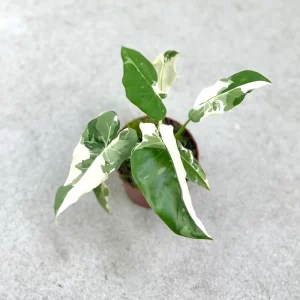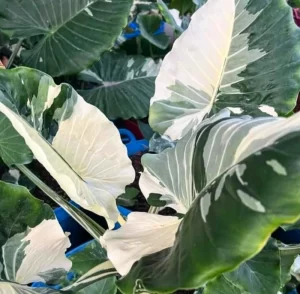- English
- Chinese
- French
- German
- Portuguese
- Spanish
- Russian
- Japanese
- Korean
- Arabic
- Irish
- Greek
- Turkish
- Italian
- Danish
- Romanian
- Indonesian
- Czech
- Afrikaans
- Swedish
- Polish
- Basque
- Catalan
- Esperanto
- Hindi
- Lao
- Albanian
- Amharic
- Armenian
- Azerbaijani
- Belarusian
- Bengali
- Bosnian
- Bulgarian
- Cebuano
- Chichewa
- Corsican
- Croatian
- Dutch
- Estonian
- Filipino
- Finnish
- Frisian
- Galician
- Georgian
- Gujarati
- Haitian
- Hausa
- Hawaiian
- Hebrew
- Hmong
- Hungarian
- Icelandic
- Igbo
- Javanese
- Kannada
- Kazakh
- Khmer
- Kurdish
- Kyrgyz
- Latin
- Latvian
- Lithuanian
- Luxembou..
- Macedonian
- Malagasy
- Malay
- Malayalam
- Maltese
- Marathi
- Mongolian
- Burmese
- Nepali
- Norwegian
- Pashto
- Persian
- Punjabi
- Serbian
- Sesotho
- Sinhala
- Slovak
- Slovenian
- Somali
- Samoan
- Scots Gaelic
- Shona
- Sindhi
- Sundanese
- Swahili
- Tajik
- Tamil
- Telugu
- Thai
- Ukrainian
- Urdu
- Uzbek
- Vietnamese
- Welsh
- Xhosa
- Yiddish
- Yoruba
- Zulu
- Kinyarwanda
- Tatar
- Oriya
- Turkmen
- Uyghur

Ko nga tipu o roto o roto i te maioha mo o raatau ahua ataahua me nga rau matomato matotoru kei roto i te alocasia, he maha tonu te ingoa o te temepara. I ahu mai i nga waahi tropic, ka mau i te allocasia calidora i raro i nga tikanga e tika ana, e tuku ana i to whare, i te waahi ranei.

Alocasia calidora
Kia rite mo te whakato
Alocasia Calidora’s development begins with the choice of the appropriate planting surroundings. Alocasia first has to grow in well-drained soil. Generally speaking, sandy soil or organic-rich peat is perfect. These soil kinds not only provide enough nutrients but also efficiently drain water to prevent root rot brought on by water buildup at the plant’s base.
Selecting a container is advised to include a flower pot with bottom drainage holes. This guarantees fast drainage of extra water and helps to avoid water buildup compromising plant roots. To guarantee that the Alocasia’s roots may extend in the container, its dimensions should correspond with the expanding area of the plant.
Te wa whakato
Alocasia may be planted after soil and container preparation. Usually, division or seeds allow Alocasia Calidora to be grown. Division is a more often used technique as it guarantees genetic features and may rapidly spread fresh plants. Dividing calls for you to split the calla lily’s roots from the mother plant and place the split pieces in a fresh container. Make sure every division has adequate roots; then, gently compress the ground to guarantee steady development.
Mena kei te whakatau koe mo te whakatipu purapura, me matua whakarite koe i nga purapura i runga i te mata o te oneone ka oti te kapi ki te apa angiangi o te paru. Teitei ake te pāmahana me te haumākū mō te whakatipu uri; Na, ko te ipu whakato i roto i te taiao mahana me te mahana hei whakaara i te reiti whakatipu. Ina tipu te purapura, me whakawhiti tika ratou me te whakatika haere ki te ao o waho.
Te taiao tipu
Alocasia Calidora has certain environmental needs throughout its development. Light is first of all the main determinant. Alocasia prefers vivid indirect light; direct sunlight should be avoided. Too intense sunshine could scorch the leaves and compromise the plant’s vitality. Though avoid direct sunshine, the best lighting conditions are either near the window or in a well-lit interior area.
Ko nga mea nui e awe ana i te whanaketanga o Alocasia kei roto ano hoki te pāmahana me te makuku. Alocasia rite ki te taiao mahana; Ko te whānuitanga o te tipu o te pāmahana ko te 25 ki te 30 nga nekehanga Celsius. Ko te whanaketanga o Calla Lily ka tino heke iho i raro i te awhe pāmahana, tae atu ki te taha o nga rau kowhai ka ara ake. I tua atu, ko nga rengarenga Calla he matea makuku. Tetahi atu Air Hākū ana i te Whakawhanake Hauora. Na roto i te riringi, te whakauru ranei i te horohi, ka whakaara ake te hau i te hau ma te maroke.
Whakainu me te whakatipu
Ko nga hiahia o Calla he hiahia tino whakainu ahurei, na reira he nui, he iti rawa ranei te wai ka awe i to raatau whanaketanga. Ko te ahua o Calla Lilies he rite ki te oneone ngoikore, engari kaua e marika. Ahakoa ko te maha o nga whakamakuku ka tino piki ake i te wa o te tipu tipu, he mea nui ki te whakaū i te punaha wai kaha i raro o te ipu. Ko nga rengarenga o Calla ka heke haere i te wa o te takurua, na reira ko te nui o te whakainu he tika kia kore ai e pakaru te pakiaka mai i te hanga wai.
Ko te whanaketanga o Calla rengarenga he nui te nuinga ki te whakato. Ko te horo tongi tika e tika ana ka whakarato i nga matūkai e hiahiatia ana e te tipu me te akiaki i te whanaketanga pai. Ko te tono i nga maniua wai whakaheke rite ranei i nga maniua ngoikore ranei i raro nei ka awhina i a koe i nga wiki e rua i te puna o te punawai i te ngahuru me te hotoke. Hei aukati i te Burns, kia tupato kia kaua e uru ki te tongi tika ki nga rau tipu.
Te whakahou me te tapahi
Ko te arum rengarenga pea ka kaha te matotoru i te mea e tupu ana, na reira ka mutu te maramatanga, te ngoikore ranei o te werohanga. I konei, e hiahiatia ana te tapahi tika. Hei pupuri i te tipu o te tipu me te ataahua, ka tangohia pea e te tapahi tawhito, he kowhai, he otaota kua pakaru ranei. Ka awhina pea nga otaota whakahoutanga ki a koe mai i te hora i nga tarutaru i te wa e tapahi ana.
Another crucial step in guaranteeing the arum lily’s proper development is repotting. The plant should be moved to a bigger pot as the root system will progressively occupy the container as it develops. Repot ideal times are spring or fall. Gentle loosening of the roots, removal of part of the old soil, and addition of fresh soil to the new container after transplanting allows Water suitably after transplantation to let the plant to adjust to the new surroundings.
Te whakahaere i nga pepeke me nga mate
Ka taea e koe te oma ki etahi parepanga angamaheni me nga mate i te tipu o te arum. E rua nga wa e puta ana i nga mate o nga mate me nga mate kino. Ko nga mate huakita ki te kowhai me te rau e haere ana, ko te mate fungal e whakaatu ana i nga papa pango, he koriri ranei i nga rau. Ka taea pea e koe te tirotiro i te hauora o nga tipu, kia ma te noho, me te whakamahi i nga fungicides e tika ana mo te maimoatanga hei awhina me te whakahaere i nga mate.
Ko te korero mo nga pepeke, ka rere pea nga rengarenga Calla ki roto i nga pepeke, aphids, me nga moni mokowhiti. Ko enei pepeke ehara i te awe i te whanaketanga tipu engari ka arahi ano hoki ki etahi atu mate. Ka kitea nga pepeke, hamani i nga otaota me te pai o nga pepeke e tika ana; Ki te kore, horoia nga rau o nga tipu me te wai hopi me te wai ma ki te whakakore i nga pepeke. Tirohia nga tipu.

Alocasia calidora
Mai i te whakato ki te tiaki i ia ra, ko nga waahanga o te whakawhanaketanga o Calla Lily e kii ana kia tupato tupato i nga ahuatanga maha. Ma te mohio ki nga hiahia o te alocasia calidora mo te marama, te pāmahana, te makuku, me etahi atu, ka kaha ake te oranga i raro i nga ahuatanga e tika ana. Ko nga waahanga whakahirahira hei whakarite i te whanaketanga o te rengarenga o Calla i taua wa ano hoki he whakainu tika, he tongi, he whakaiti me te whakahou. Ko te Allocasia Calidora pea ka hanga i tetahi waahi ataahua i roto i te taiao o roto ma te tiaki i nga kairangataiao me te akiaki i te mate mate me te tino ataahua o te whare, me te ataahua.
Previous News
Te whakamakuku i te waa o te conego CrootonNext News
Adaptability of Croton Congo for indoor cultiva...


